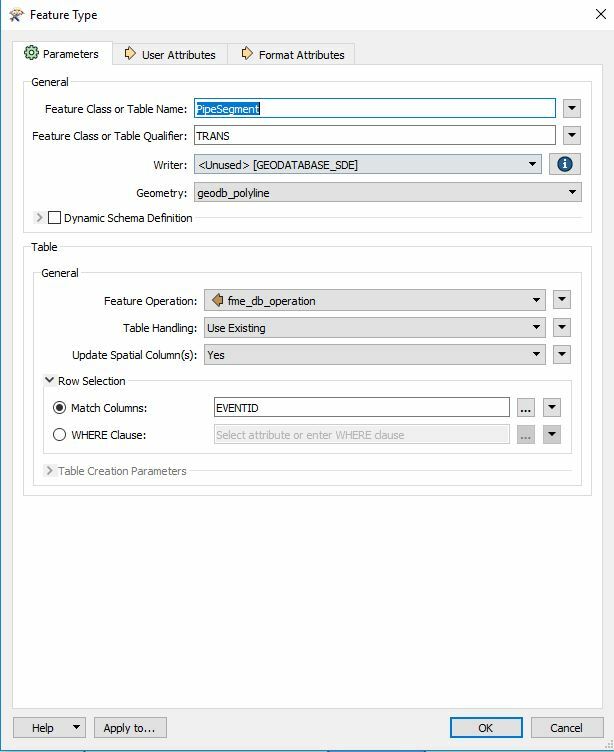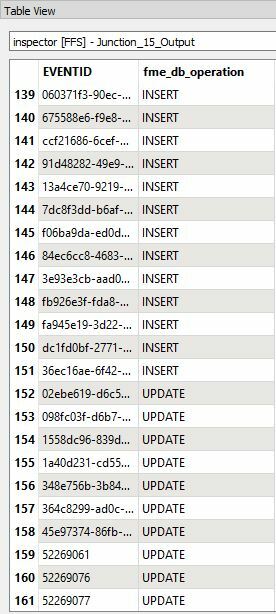I am performing a combination of inserts and updates to sde db. I continue to receive this message:
Error while retrieving an ArcObjects update cursor for the table/feature class 'TRANS.PipeSegment'. The error number from ArcObjects is: '-2147215975'. The error message from ArcObjects is: {The number of points is less than required for feature}
I have read the ESRI documentation regarding this message and performed all workarounds. However, I do not believe they apply to this particular situation. Furthermore, I have inspected the geometry of the features and everything checks out.
I have used this workspace in the past with no issues, but since updating to recent builds I have experienced this never-before-seen problem. For all incoming features, I have the fme_db_operation attribute set to either UPDATE or INSERT accordingly. upon checking the failing feature, it does have the expected value for fme_db_operation.
The writer is configured as shown below:

This is a subset of the inspected data showing the fme_db_operation values:

Does anyone have any insight as to what is causing the above error and ultimately failure to write?







